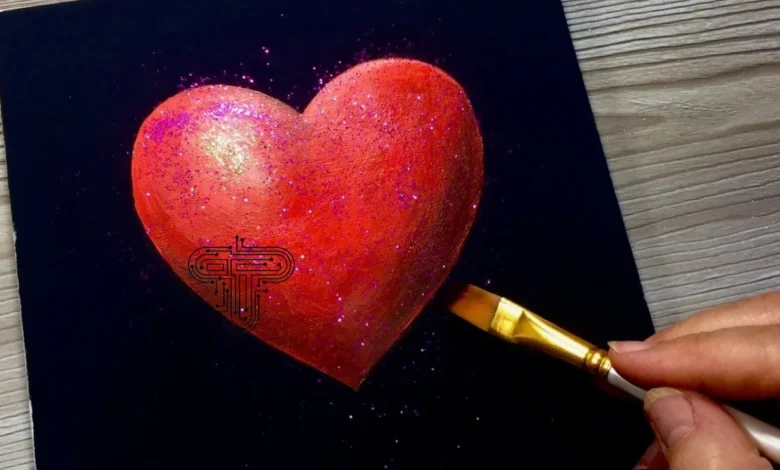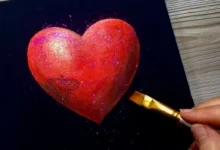Drawing:yw-tzomiaao= heart – A Comprehensive Guide to Mastering Heart Art

Drawing:yw-tzomiaao= heart is an art form that allows us to express emotions, creativity, and stories in a visual format. One of the most universally recognized symbols in art is the heart. Whether it’s for Valentine’s Day, a personal gesture, or a decorative design, Drawing:yw-tzomiaao= heart is a powerful way to convey love, affection, and care. In this guide, we’ll explore the different ways to draw hearts, the techniques behind creating perfect heart shapes, and the various styles you can experiment with.
What Makes a Heart So Special in Art?

A Drawing:yw-tzomiaao= heart is more than just a shape; it represents deep emotional connections. From ancient symbols to modern designs, hearts have been used throughout history to express love, passion, and empathy. Drawing
= heart can be a simple yet profound way to communicate emotions visually.
- Symbol of Love: The heart shape is often associated with love and affection. It’s a universal symbol recognized across cultures.
- Expression of Emotion: Hearts convey powerful feelings, from the joy of love to the sorrow of heartbreak.
- Creative Versatility: While the heart symbol is simple, artists can transform it in countless ways, from basic sketches to intricate designs.
The Basics of Drawing
= Heart
Before diving into advanced techniques, it’s essential to understand the basics of drawing a heart shape. Drawing a heart might seem simple, but it requires practice and precision.
How to Draw a Basic Heart
- Start with Two Circles: Begin by drawing two small circles that touch each other. These will form the upper lobes of the heart.
- Draw a V-shaped line: From the bottom of the two circles, draw a straight, downward-pointing “V” shape. This will form the tip of the heart.
- Refine the Shape: Smooth out the top where the circles meet, making sure to round out the shape. The bottom “V” should be sharp, representing the pointed tip of the heart.
- Erase the Guidelines: Once you have the basic shape, erase any unnecessary lines from the circles and “V” to clean up your heart.
Advanced Techniques for Drawing
= Heart
Once you’re comfortable with basic heart shapes, you can start experimenting with more advanced techniques. Adding texture, shading, and detail can elevate your artwork.
Shading for Depth
- Light Source: Decide where the light is coming from. This will determine where the highlights and shadows go.
- Add Gradient Shading: Shade the heart with a gradual transition from light to dark. The darkest area should be near the bottom tip, with the top of the heart remaining lighter.
- Blend Smoothly: Use a blending tool or your finger to smooth out the shading, making it appear more natural.
Adding Details and Decorations
- Patterns: You can enhance the heart with patterns like stripes, polka dots, or even flowers. Drawing these designs inside or around the heart can make it more visually interesting.
- Texturing: To give the heart a more organic feel, use cross-hatching or stippling to add texture. This can give the heart a more realistic, 3-dimensional look.
Creative Styles for Drawing
= Heart
Hearts are versatile and can be adapted into various artistic styles. Here are a few styles that you can explore when drawing a heart.
Watercolor Hearts
Watercolors can bring a soft, dreamy quality to your heart designs. The blending of colors can convey deep emotions, and the unpredictable nature of watercolor gives each heart a unique look.
- Wet-on-Wet Technique: This method involves applying wet paint to a wet surface, allowing the colors to blend naturally, creating a soft and blended effect.
- Layering: Start with lighter shades and gradually layer darker colors to build depth. A mix of reds, pinks, and purples can make for a beautiful, vibrant heart.
Geometric Hearts
For those who enjoy symmetry and precision, geometric hearts are a fantastic style to try. These hearts often feature straight lines, sharp angles, and repetitive shapes.
- Use of Shapes: Combine circles, triangles, and squares to form a heart. Each section of the heart can have its pattern or color, giving it a modern and abstract feel.
- Symmetry: Ensure the heart is symmetrical by carefully measuring and aligning the shapes. This style works great for digital art as well.
Fun Ways to Incorporate Drawing
= Heart into Your Art Projects
Hearts are not limited to just Valentine’s Day cards; they can be incorporated into a variety of art projects. Here are some fun ideas to try:
Heart Mandalas
Mandalas are circular designs that often symbolize harmony and balance. Incorporating hearts into a mandala can represent love and unity.
- Start with a Center Circle: Draw a small circle in the center of your page.
- Add Heart Shapes: Around the center, draw several heart shapes. Each heart can have its design or pattern, creating a symmetrical mandala effect.
- Add Detail: Decorate the outer edges with intricate lines or flourishes for a more ornate look.
Heart Collages
For a mixed-media project, try creating a collage of hearts. This project can combine drawings, cut-out shapes, and various textures to form a unique piece of art.
- Cut Out Heart Shapes: Use paper, fabric, or magazine cutouts to create different heart shapes.
- Arrange Creatively: Position the hearts on your canvas or paper to form a larger heart or an abstract design.
- Glue and Secure: Once you’re satisfied with the arrangement, glue the pieces down and let them dry.
The Symbolism Behind Drawing
= Heart
Beyond the aesthetic value, drawing
= heart also holds deep symbolic meaning. It represents love, connection, and understanding, making it a meaningful symbol in many cultures and contexts.
Love and Affection
Hearts are universally recognized as symbols of love. Whether it’s romantic love, familial love, or self-love, the heart symbolizes the deep emotional connections we share with others.
Strength and Resilience
The heart can also symbolize strength and resilience. Despite being a fragile organ in our bodies, the heart is associated with endurance and the ability to overcome challenges, making it a powerful symbol in art.
Drawing
= Heart in Pop Culture and Design
Hearts have made their mark in pop culture and design over the years. From tattoos to logos, the heart symbol is everywhere.
Tattoos
Heart tattoos are incredibly popular, often symbolizing love, remembrance, or personal strength. These tattoos can range from simple outlines to intricate designs, sometimes combined with other symbols like arrows or flames.
Graphic Design
Hearts are frequently used in logos, advertisements, and branding. Their universal recognition makes them ideal for companies in the fashion, beauty, and lifestyle industries.
Tips for Improving Your Drawing
= Heart Skills
- Practice Regularly: Like any other art form, the more you practice, the better you’ll get. Spend time sketching hearts in different styles and shapes to refine your skills.
- Study Other Artists: Look at how other artists incorporate hearts into their work. Pay attention to how they use shading, color, and texture.
- Experiment with New Mediums: Don’t be afraid to try new materials like markers, pastels, or digital tools. Each medium can bring a fresh perspective to your drawing
- = heart creations.
Conclusion – Let Your Heart Speak Through Art
Drawing a heart is more than just sketching a shape; it’s about conveying deep emotions and connecting with others through art. Whether you’re using hearts in a simple doodle, a detailed painting, or a creative project, they hold immense meaning and creative potential. So, grab your pencil, let your imagination flow, and start creating heart art that speaks to the soul. With practice and dedication, you’ll soon master the art of drawing
= heart and express love, strength, and creativity like never before!

